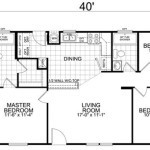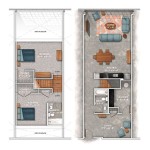Floor Plan Of Office Space
The floor plan of an office space is a crucial aspect that impacts the functionality, productivity, and overall ambiance of the workplace. A well-designed floor plan optimizes space utilization, promotes collaboration, and enhances the well-being of employees. Here are key considerations and tips for creating an effective office space floor plan:
1. Define Space Requirements: Determine the number of workstations, meeting rooms, private offices, and other necessary spaces. Consider future growth potential and adjust the floor plan accordingly.
2. Establish Traffic Flow: Plan the layout to ensure that employees can move around the office smoothly without interruptions. Designate clear pathways, avoid bottlenecks, and provide adequate circulation space.
3. Position Workstations Strategically: Locate workstations near windows to provide natural light and fresh air. Consider the proximity to shared resources, such as printers or supplies, to minimize distractions and improve efficiency.
4. Create Meeting and Collaboration Areas: Designate specific spaces for meetings and informal collaborations. These areas should be comfortable, well-equipped, and accessible to all employees.
5. Incorporate Private Spaces: Provide private offices or dedicated areas for employees who require privacy or focus. These spaces should offer sound insulation and minimal distractions.
6. Utilize Vertical Space: Consider installing shelves, cabinets, or mezzanine levels to maximize space utilization. Vertical storage solutions allow for efficient organization and reduce clutter.
7. Promote Natural Light: Design the floor plan to allow ample natural light into the office space. Windows and skylights enhance employee well-being and create a more inviting and energetic work environment.
8. Incorporate Open and Closed Areas: The floor plan should strike a balance between open workspaces that promote collaboration and closed areas that provide privacy and focus. Create a variety of spaces to accommodate different work styles.
9. Plan for Accessibility: Ensure that the office space is accessible to all employees, including those with disabilities. Provide ramps, elevators, and accessible bathrooms to create an inclusive work environment.
10. Consider Future Expansion: Anticipate potential growth and expandability when designing the floor plan. Allow for flexibility to accommodate changes in space requirements without major renovations.
By following these considerations, you can create a functional, efficient, and inspiring office space floor plan that enhances productivity, collaboration, and employee well-being.

Office Floor Plans Why They Are Useful

Professional Office Design Services Commercial Interior Space Planning

Office Layout Plan

Office Floor Plans Why They Are Useful

Pin Page

Office Planning For Better Organization Roomsketcher

Free Editable Office Layout Examples Edrawmax

Pin Page

Office Floor Plans Why They Are Useful

Floor Plan Pmo Akihabara Kita Al Office Building Nomura Real Estate Development Co Ltd








